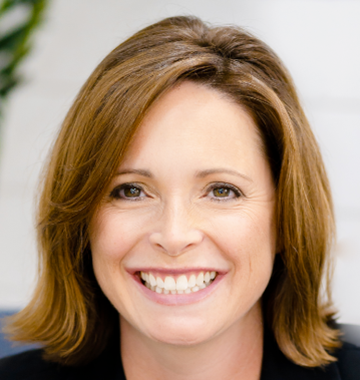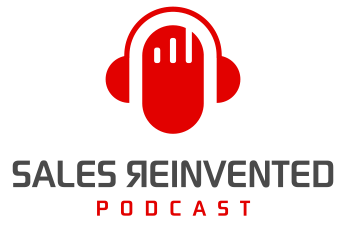Episode #350: Stacey Brown Randall

Meet
Stacey Brown Randall
Stacey Brown Randall is the multiple award-winning author of Generating Business Referrals Without Asking, host of the Roadmap to Referrals podcast and national speaker. Stacey teaches business owners how to generate referrals naturally… without manipulating, incentivizing or even asking. She has been featured in national publications like Entrepreneur magazine, Investor Business Daily, Forbes, and more. She received her Master’s in Organizational Communication and is married with three kids.
Our Mission Is To Change The Negative Perception Of Sales People
Our Vision Is A World Where Selling Is A Profession To Be Proud Of
Stacey Brown Randall agrees with the majority definition of a referral: It is a potential client being referred to you. To qualify as a referral, there has to be a personal connection to the referral source. Secondly, the prospect needs to know they have a problem and are interested in solving it (thus willing to be connected with you).
But getting referrals is where Stacey’s strategy differs from the norm. Stacey believes that you should never ask for referrals. So how do you get them? Listen to this episode of Sales Reinvented to find out!
Outline of This Episode
- [1:00] What are referrals? How do they work in sales?
- [2:09] Common mistakes salespeople make and how to avoid them
- [4:40] How to leverage social media to generate referrals
- [6:35] The #1 thing you need to do is look at referral sources
- [8:27] How to measure the success of a referral program
- [10:05] How to cultivate existing relationships to get referrals
- [12:56] Best practices for generating referrals
- [14:41] The role of technology in referral selling
- [15:39] Stacey’s top 3 referral selling dos and don’ts
- [18:44] Focus on building relationships and you’ll never need to ask
Common mistakes salespeople make and how to avoid them
Stacey avoids the traditional routes of getting referrals. In fact, she teaches salespeople that they should never ask for referrals. Instead, she has her clients focus on relationships. Her goal is that you never have to muster up the courage to ask for a referral again.
So how do her clients get referrals? She believes referrals come from relationships. They unpack what’s happening in the brain, the psychology of trust, and what’s happening from a behavioral economics perspective. They focus on the relationship and build a strategy for strengthening the relationship. Stacey says to:
- Identify your existing referral sources and build a plan to stay connected.
- Use the proper language throughout that relationship
- Do not hint about referrals
It’s all about the client experience and relationship you’ve built with them.
How to measure the success of a referral program
Identify existing referral sources. How do you get that data? Go back a couple of years and look at your client lists. Where did each one of them come from? Make sure you capture the referral source’s name.
Ongoing, track every single time a prospect lands in your business, where they came from, the outcome, and the revenue generated. What was the quality of the referral? It tells you so much about the health of the referrals you’re receiving.
Stacey defines a successful referral program as one where they’ve doubled, tripled, or quadrupled the number of referrals they receive in a year. They also look for an increase in the closing ratio and the number of people referring you.
Cultivate existing relationships to get referrals
Stacey teaches a four-part framework you can use depending on your referral plan. The referral always includes letting them know you appreciate the referrals they send to you. So you need to focus on what they need (it’s not a Yeti with your logo on it). You need to take into account their industry, compliance/regulation issues, and who they are.
Devise a plan where your outreach is memorable and meaningful. Are you staying top of mind? You need to transcend “keeping in touch.” It can’t just be a newsletter, email, or text message. You need to leverage the “surprise and delight” factor while weaving in the proper language. Their referral plan includes 5–8 outreaches per year. It’s about occupying space in the mind of your referral source.
Stacey doesn’t tell people what to do. Why? Because the “what” you do only comes after knowing who you’re doing it for. You have to identify your referral sources first. If your referral sources are in different industries, your conversations will be different with each person. Secondly, you need to know what they need. They need to know that you care. This takes work.
Focus on building relationships and you’ll never need to ask for referrals
Amanda is one of Stacey’s longest-running clients. When they started working together, Amanda received 6–7 referrals per year. They quickly doubled it to 12 referrals. By the end of the first year, she’d received 27 referrals. Nine years later, she consistently receives 40+ referrals per year.
Amanda was able to manage relationships and take care of people the right way (as an introvert). She didn’t want to network constantly. But her plan allowed her to generate what she needed in a way that worked for her. Amanda did the work with the roadmap and strategy provided.
Learn more about Stacey’s unique strategy of not asking for referrals in this episode!
Connect With Paul Watts
Audio Production and Show notes by
PODCAST FAST TRACK
https://www.podcastfasttrack.com
Learn More About Stacey Brown Randall
Are there any books, podcasts, or classes on Referral Selling that you recommend? As a contrarian to how most of the industry teaches referrals, I don’t recommend tactics or strategies that focus on teaching how to ask for referrals, compensate for referrals, be overly promotional and gimmicky to receive referrals or to network a ton to receive referrals. I teach how to generate referrals naturally… without manipulating, incentivizing or even asking. For those interested I recommend my book, Generating Business Referrals Without Asking and my podcast, Roadmap to Referrals.
In the field of ‘Referral Selling’ – Who do you most admire and why? I appreciate the way referrals have been taught for decades because it allowed me the opportunity to uncover a very different way to generate referrals and to help those who were looking for a better way to receive referrals that not only felt good in implementation but also worked.
How can salespeople track and measure the success of their referral program? Tracking your referral data is very important. The good news is you only need to track a few key pieces of data to know if your referral strategy is working and how to improve.
Why should you track?
- To know how many referrals you receive
- To know how many referrals you receive per referral source (the person who refers you)
- To know the overall closing ratio of referrals received
- To know closing ratio by individual referral sources
What should you track?
- The date the referred prospect was received
- The prospective client’s name
- The referral source’s name
- Outcome – did they become a client?
- Revenue (optional but powerful)
If you’d like to download the simple referral tracker spreadsheet I recommend, please grab it here. (link for underlined words: https://www.staceybrownrandall.com/referral-tracker )
What are some common reasons why customers may not provide referrals, and how can salespeople overcome these obstacles? People have this misguided opinion that customers owe a referral or should provide them. They don’t. It’s wonderful when they do give them but you’ll need to do more than just give them a great client experience to receive them. Building a relationship is paramount and the strategy we teach mixes memorable and meaningful outreach with planting referral seeds.
What is the difference between a referral, an introduction and a lead? A referral is when you have been personally connected by the referral source to the prospect and the prospect has identified their need. An introduction is when you have been connected to someone else but they’re not clearly identified as a prospect needing to hire you. A lead is an overall general term and is sometimes used interchangeably with prospect.
How do you determine which customers to target for referrals, and what are some effective strategies for reaching out to them? Not every client will refer – but in some cases you can consider those who provide testimonials or online reviews as more likely to refer as well as those who share with you about the experience they have had. With the clients you’ve identified as a potential referral sources, start by building a relationship with them that is solely focused on them so you can occupy more space in their mind and then be able to plant referral seeds.
What are some potential risks or downsides to relying heavily on referrals for new business, and how can sales teams mitigate these risks? Every business – regardless of size – should have a diversified business development strategy. With that being said, referrals should be at the top of your list to generate new clients because of the lower cost of acquisition (as compared to PPC, advertising, SEO, etc.), and that 83% of people prefer to make a buying decision based on being referred by someone they trust. In addition, referrals have a 70% higher conversion rate. There isn’t a downside to being focused on referrals unless you don’t follow a proven strategy you follow that produces consistent results.
Finally, what advice would you give to salespeople who are looking to launch a referral program or improve their referral generation skills? There are many different types of referral strategies and tactics you can try. Your goal is to find one that works for you, meaning you enjoy the execution and it works. If you enjoy asking for referrals and it works for you – then do that. But for those who want to generate referrals in a different way, those that want to generate referrals naturally – without manipulating, incentivizing or even asking – we’d love for you to learn more at www.staceybrownrandall.com
Share This Episode, Choose Your Platform!
